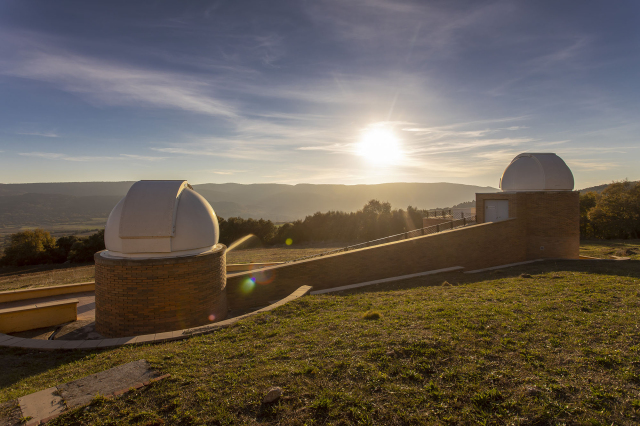
According to the Parc Astronòmic del Montsec, the period with the greatest activity of the great star will begin in the middle of 2024 and will last until the beginning of 2026.
The XV World Starlight Night will be held on April 20, an event to reflect on the defense of starlight and the protection of the night sky.
2025 will be a year of maximum solar activity, a phenomenon that we can already observe this 2024 with an obvious increase in spots and other elements, and which will last until the beginning of 2026. During the coming months there will be more and more activity in the Ground. Subsequently, the maximum intensity will be reached, which will last between one and two years.
This season, people interested in observing this solar phenomenon up close have an appointment at the Parc Astronòmic del Montsec, located in the municipality of Àger, in the region of La Noguera, since they can only be seen with a telescope. Through its daytime experiences, both those aimed at the general public and those designed for families, visitors will be able to discover spectacular aspects of the Sun from the hand of an astronomer and, at the same time, enjoy a more dynamic observation of the Sun. In this case, from the park, morning visits are always recommended, which is when the Sun is higher in the sky and is more favorable for observation.
Now and until 2026, the observation of the great star will be even more spectacular. Basically, you will be able to notice the presence of two phenomena on the surface of the Sun. On the one hand, you will notice more sunspots, which are the darkest and least warm areas of the surface. They appear and disappear for a few days and with the solar maximum there are a greater number of them visible. On the other hand, it will also be possible to observe more solar flares, which form in the outer layers of the Sun and expel matter and solar radiation into space. These energy discharges are responsible for the northern and southern lights on Earth, in the countries and territories closest to the Earth's poles. At the same time, more solar flares and prominences can also be noticed.
However, during this phase of the solar cycle, which repeats every 11 years, solar storms can also occur, which consist of the arrival of energetic particles from the Sun in greater quantity and intensity than is common, as a result of the flares, and this can generate more intense auroras at the poles, which, at the same time, can be seen from unusual places. This increase in charged particles reaching the earth can cause effects on satellites and communications. This is why it is followed at a global level to protect satellites and, if appropriate, orient them to avoid damage in the event of a very intense flash.
All these phenomena are completely normal on the Sun, but they are more visible during solar maximum.
World Starlight Night
The 15th edition of the World Starlight Night will be held next Saturday, April 20. The event, promoted by the Starlight Foundation, was born in defense of the night sky and the right to starlight. Its origin goes back to 2007, during the First International Starlight Conference, in which the "World Declaration in Defense of the Night Sky and the Right to Stargaze" was approved, a magna letter signed by representatives of UNESCO, the World Tourism Organization and the International Astronomical Union, among other international agencies and organizations. The declaration regards heaven as a universal inheritance.
The Astronomer was awarded the Starlight Award for astronomy and dark sky education four years ago. It is also located in Montsec, a place with one of the best skies in the world for astronomical observation and enjoying the light of the stars. In fact, the Montsec mountain range is the second place in the world to have double certification as a Starlight Tourist Destination and Reserve since 2013.
On Saturday 20 April, at 12.30 in the morning, Àger City Council and Orígens Geopark, as part of its 6th anniversary, will organize a solar observation at Àger Castle. The activity will be led by an astronomer from the Astronomy.
Star events of 2024
Throughout 2024, l'Astronomico will offer, among others, three unique experiences. One is the screening of Pink Floyd's iconic album 'The Dark Side of the Moon', in commemoration of its 50th anniversary. The Astronomical Park commemorates the legacy of the British rock band with an immersive experience with immersive music and visuals. The screenings that started last December will continue until November 16 this year.
The second proposal is the Festival of Astronomy, which is celebrated every year and this year reaches its 10th edition, where it will present a wide range of scientific, cultural and leisure activities, designed for the whole family. The main objective is to disseminate science to society and promote Montsec as an astrotourism destination.
Finally, the "Music under the Stars" series reaches its 14th edition this season, combining a visit to the Park with a musical show by Catalan artists. Night visits allow you to enjoy the experience in a unique environment, under the starry sky.
